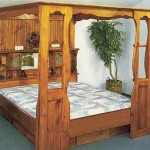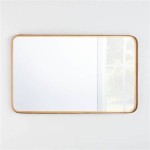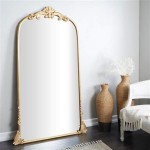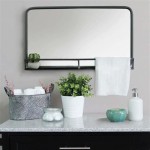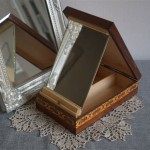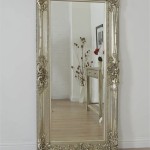Wall Art with Mirrors: A Reflective Guide to Style and Space
Mirrors have long transcended their purely functional role of reflection. Incorporating mirrors into wall art provides a dynamic and versatile approach to interior design, offering both aesthetic and practical benefits. This article explores the diverse world of wall art with mirrors, examining its various forms, design considerations, and impactful applications in different spaces.
Key Considerations for Choosing Mirror Wall Art
Selecting the right mirror wall art involves careful consideration of several factors. These factors contribute to the overall cohesiveness and impact of the piece within a given space. The size, shape, frame, and style of the mirror should complement the existing décor and fulfill the intended purpose, whether it's to create a focal point, enhance natural light, or add a touch of artistic flair.
Types of Mirror Wall Art
Mirror wall art encompasses a wide range of styles and configurations. From ornate, framed mirrors to minimalist geometric arrangements, there's a style to suit every taste and interior design scheme. Some popular types include:
*Single Statement Mirrors: Large, elaborately framed mirrors or uniquely shaped mirrors can serve as striking focal points in a room, adding a touch of grandeur and personality.
*Mirrored Wall Sculptures: These three-dimensional pieces incorporate mirrors into intricate designs, creating captivating plays of light and reflection. They often serve as artistic centerpieces.
*Geometric Mirror Arrangements: Multiple mirrors arranged in geometric patterns, such as hexagons or squares, offer a contemporary and dynamic look, adding visual interest to a wall.
*Sunburst Mirrors: These mirrors, with their radiating frames resembling the sun's rays, bring a touch of vintage glamour and warmth to a space.
*Mosaic Mirror Designs: Composed of smaller mirror pieces arranged in a pattern or image, mosaic mirrors create a textured and visually appealing surface. They can range from simple to intricate designs.
Enhancing Space and Light with Mirrors
One of the most significant advantages of incorporating mirrors into wall art is their ability to manipulate light and space. Strategically placed mirrors can brighten a room by reflecting natural light, creating an illusion of depth and expansiveness, particularly beneficial in smaller spaces. Mirrors can also be used to highlight specific architectural features or artwork.
Styling Mirror Wall Art in Different Rooms
The application of mirror wall art varies depending on the room and its intended function. Consider these examples:
*Living Room: A large statement mirror above a fireplace mantel can create a focal point and add a touch of elegance. Smaller, decorative mirrors can be grouped together to form a gallery wall.
*Dining Room: A strategically placed mirror can reflect the dining table and chandelier, creating a sense of grandeur and doubling the visual impact of the space.
*Bedroom: A full-length mirror is a practical necessity, while smaller, decorative mirrors can add a touch of personality and style. A mirrored headboard can create a glamorous focal point.
*Bathroom: Mirrors are essential in bathrooms, but they can also be used as decorative elements. A framed mirror above the vanity or a mirrored medicine cabinet can enhance the functionality and style of the space.
*Hallway: A long, narrow hallway can benefit from the addition of mirrors, which can create the illusion of width and depth.
Framing and Materials
The frame of a mirror plays a significant role in its overall aesthetic. Frame materials and styles can greatly influence the mirror's impact on a room's décor.
*Wood Frames: Offer a classic and versatile option, ranging from rustic to ornate styles. Different wood finishes can complement various interior design schemes.
*Metal Frames: Provide a contemporary or industrial look. Materials like brass, iron, and aluminum offer different aesthetic qualities.
*Frameless Mirrors: Offer a minimalist and modern appeal, emphasizing the reflective surface itself.
Maintenance and Care
Maintaining the beauty and longevity of mirror wall art requires regular cleaning and care. Dusting with a soft cloth and using a suitable glass cleaner can help keep mirrors looking their best. Avoid using abrasive cleaners, which can scratch the surface.
Integrating Mirror Wall Art into Existing Decor
Successfully integrating mirror wall art into existing décor involves considering the overall style and color palette of the room. The mirror's size, shape, and frame should complement the existing furniture, artwork, and accessories. Consider these points:
*Style Cohesion: Choose a mirror style that aligns with the existing design theme, whether it's modern, traditional, bohemian, or eclectic.
*Color Coordination: Consider the frame color and how it relates to the room's existing color scheme. A contrasting frame can create a bold statement, while a complementary color can create a more harmonious look.
*Placement and Proportion: The placement and size of the mirror should be proportionate to the wall and surrounding furniture. Avoid overcrowding a wall with too many mirrors or choosing a mirror that is too large or too small for the space.

Drop Mirrors 3d Wall Decor Mirror Decorative Gold Singapore

Luxury Gorgeous Gold Frame Multiple Mirrors Iron Wall Mount Art Decor Furniture Home Living On Carou

3r Studios Medium Round Gold Art Deco Mirror 23 5 In H X W De4799ahc The Home Depot Room Decor Living Mirrors

Water Drop Decorative Mirrors Wall Decor Mirror Available In Singapore

Wall Decor Framed Mirrors Arch Design

How To Decorate With Mirrors Ideas Advice Lamps Plus

10 Most Stylish Wall Mirror Designs To Adorn Your Modern Home Decor Contemporary Mirrors Living Room

Teardrop Mirror Strips Ps Home Decor

Wall Mirror For Decoration Dining Room Furniture Home Living Decor On Carou

Stylish Mirror Wall Decoration Designs For Your Home Living Room Interior Design Decor


